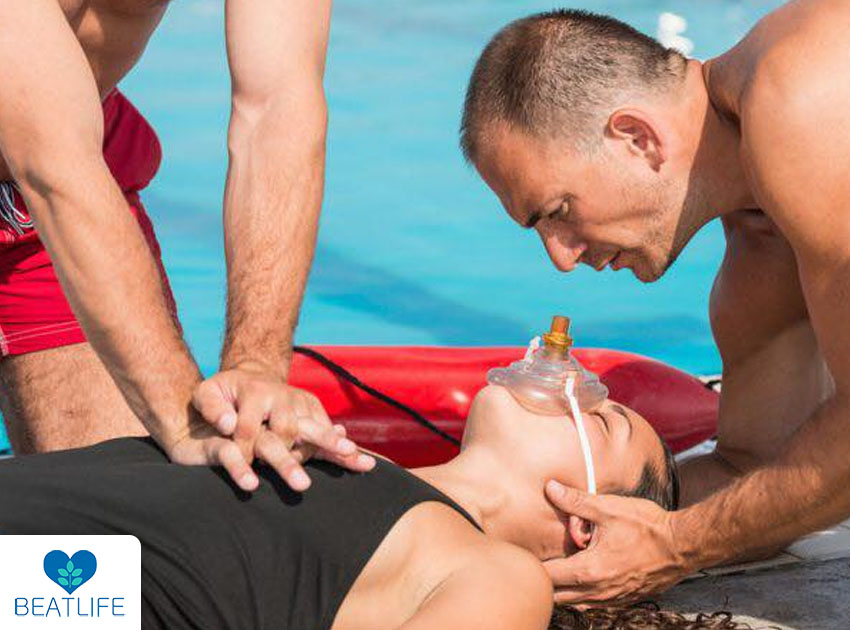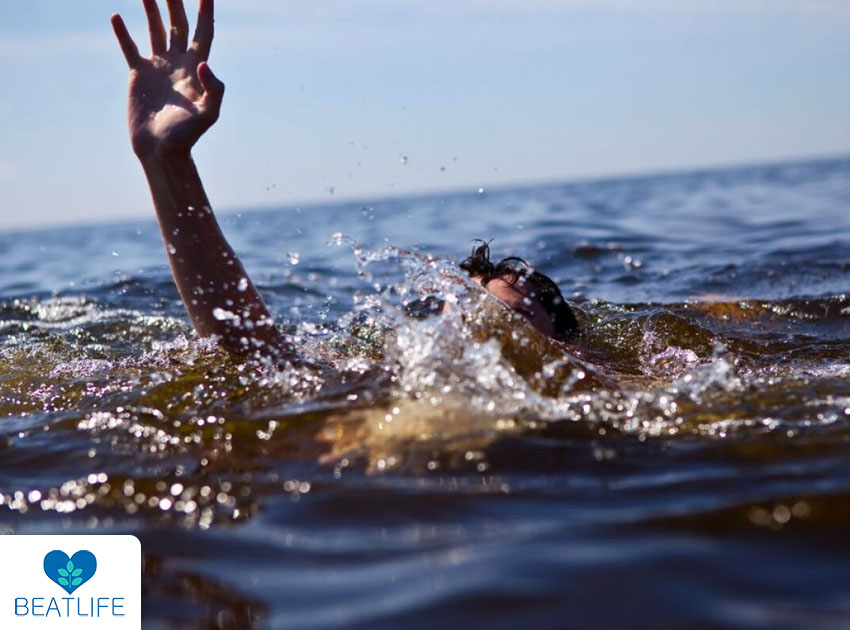How to Recognize Signs of Drowning & Rescue a Drowning Person? Drowning incidents happen in the blink of an eye, and being able to recognize the signs and take swift action can make all the difference. As medics, your quick response can be the lifeline someone desperately needs. In this guide, we’ll navigate through the subtle cues of drowning, empowering you to be a vigilant first responder. Let’s dive in, not just metaphorically.
Drowning doesn’t always come with the loud splashing we see in movies. It’s often silent and swift, making it crucial for medics to be vigilant in recognizing the signs. Understanding the gravity of this silent peril sets the stage for effective intervention.
Contents
- 1 Recognizing Signs of Drowning
- 2 Understanding Drowning Behavior
- 3 Rescue Techniques for Medics
- 4 Providing Immediate First Aid
- 5 Importance of Calling for Help
- 6 Dealing with Panic and Shock
- 7 Post-Rescue Assessment
- 8 CPR Basics for Medics
- 9 Using CPRmeter
- 10 Preventing Drowning Incidents
- 11 Your Lifesaving Role
- 12 FAQs: Your Questions Answered
- 12.1 1. How can I recognize drowning when it’s not obvious?
- 12.2 2. What’s the importance of calling for help during a drowning incident?
- 12.3 3. How do I manage panic and shock in the aftermath of a drowning event?
- 12.4 4. What are the basics of CPR for medics in a drowning situation?
- 12.5 5. How can medics contribute to preventing drowning incidents?
Recognizing Signs of Drowning
Drowning isn’t the dramatic scene we envision. It can start quietly with a person struggling to stay afloat, unable to call for help. Keep an eye out for subtle signals like vertical positioning in the water, gasping, or hair covering the face – signs that might be missed without a keen observation.
Understanding Drowning Behavior
Beyond the Hollywood portrayal. Drowning involves more than waving arms. Look for someone bobbing in the water, appearing disoriented, or making unsuccessful attempts to swim. Understanding these behaviors is key to quick identification.
Rescue Techniques for Medics
Your role as a medic in the water rescue. Approach the person with caution, ensuring your safety. If possible, use reaching aids or throw a flotation device. Avoid direct contact unless necessary, as a panicked drowning person might unintentionally pull you under.

Providing Immediate First Aid
Drowning incidents require immediate attention, and providing prompt and effective first aid can significantly impact the outcome. Here’s a guide to the essential first aids for drowning:
Ensure Your Safety First: Before rushing to the rescue, assess the situation and ensure your safety. Use reaching aids or throw a flotation device if possible. Avoid direct contact unless necessary, as a panicked drowning person might unintentionally pull you under.
Bring the Person to Safety: If the drowning person is near the shore or a solid surface, gently bring them to safety. Be cautious not to cause further harm, especially if the person is unconscious.
Check for Responsiveness: Once on solid ground, check if the person is responsive. Tap their shoulders and shout loudly. If there is no response, they may need immediate medical attention.
Call for Emergency Services: While starting the rescue, call emergency services for professional assistance. Time is of the essence, and coordinating with medical professionals is crucial for a seamless transition from initial rescue to advanced medical care.
Assess Breathing: Check for breathing. If the person is not breathing or breathing irregularly, begin CPR immediately. Ensure the airway is clear, and initiate chest compressions to maintain blood flow.
Perform Rescue Breaths: If you’re trained in CPR and comfortable providing rescue breaths, incorporate them into the cycle of chest compressions. Give two breaths every 30 compressions, ensuring the chest fully extends between compressions.
Use CPRmeter for Precision: If available, utilize Beatlife CPRmeter for precision. This device provides real-time feedback on compression depth and frequency, ensuring optimal CPR techniques and improving overall chances of a positive outcome.
Monitor and Reassess: Continuously monitor the person’s condition and reassess their responsiveness. Adjust your actions accordingly. If the person starts breathing on their own or professional help arrives, adapt your approach as needed.
Keep the Person Warm: After the rescue, cover the person with a dry blanket or clothing to help maintain body temperature. Preventing hypothermia is crucial, especially if the person has been in cold water.
Stay Calm and Provide Reassurance: Drowning events can be traumatic for both the victim and those around. Stay calm, provide reassurance, and create a safe environment. Your composure is vital for managing panic and shock.

Importance of Calling for Help
Don’t go at it alone. Call for emergency services early on. While your immediate intervention is crucial, professional help ensures a seamless transition from initial rescue to advanced medical care.
Dealing with Panic and Shock
Your calmness is their comfort. Drowning events can be traumatic for both the victim and those around. Manage panic by staying composed, providing reassurance, and ensuring a safe environment for all involved.
Post-Rescue Assessment
Assessing the aftermath. After the rescue, conduct a thorough assessment. Look for injuries, monitor breathing, and provide necessary care. Recognizing and addressing secondary issues post-rescue is as crucial as the initial intervention.
CPR Basics for Medics
Mastering the essentials. CPR is often the bridge between a drowning incident and professional medical assistance. Brush up on CPR basics – chest compressions, rescue breaths, and the correct ratio. Your expertise can be the turning point in someone’s survival story.
Using CPRmeter
Enhancing precision with technology. Beatlife CPRmeter ensures optimal chest compressions. Stay on track with real-time feedback on compression depth and frequency, improving the overall chances of a positive outcome.
Preventing Drowning Incidents
The best rescue is prevention. Educate communities on water safety, promote the use of life jackets, and advocate for swimming lessons. Your role extends beyond rescue – it involves preventing these incidents in the first place.

Your Lifesaving Role
In conclusion, recognizing the signs of drowning and executing swift rescue measures are paramount for medics. Your vigilance can transform a potentially tragic event into a lifesaving success. Stay observant, act decisively, and remember, your role goes beyond the uniform – it’s about being the unsung hero in the water’s edge drama.
FAQs: Your Questions Answered
1. How can I recognize drowning when it’s not obvious?
Look for subtle signs like vertical positioning, gasping, or disorientation in the water.
2. What’s the importance of calling for help during a drowning incident?
Professional help ensures a seamless transition from initial rescue to advanced medical care.
3. How do I manage panic and shock in the aftermath of a drowning event?
Stay composed, provide reassurance, and create a safe environment for all involved.
4. What are the basics of CPR for medics in a drowning situation?
Master chest compressions, rescue breaths, and the correct ratio for effective CPR.
5. How can medics contribute to preventing drowning incidents?
Educate communities on water safety, promote life jackets, and advocate for swimming lessons.
Reviewed by Dr Jamshidi Mohammad Reza

